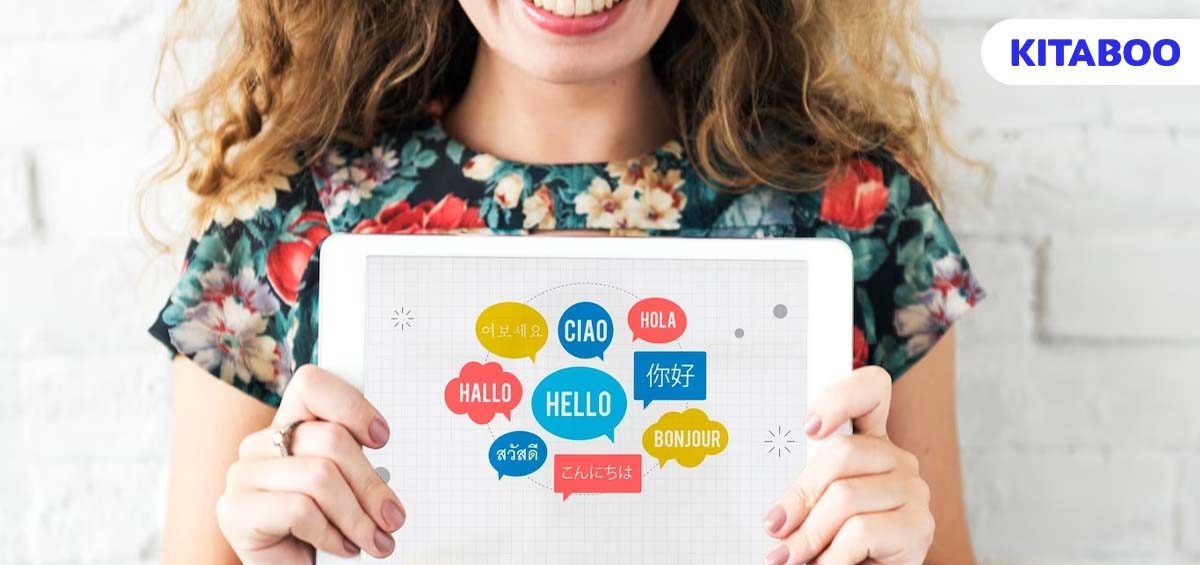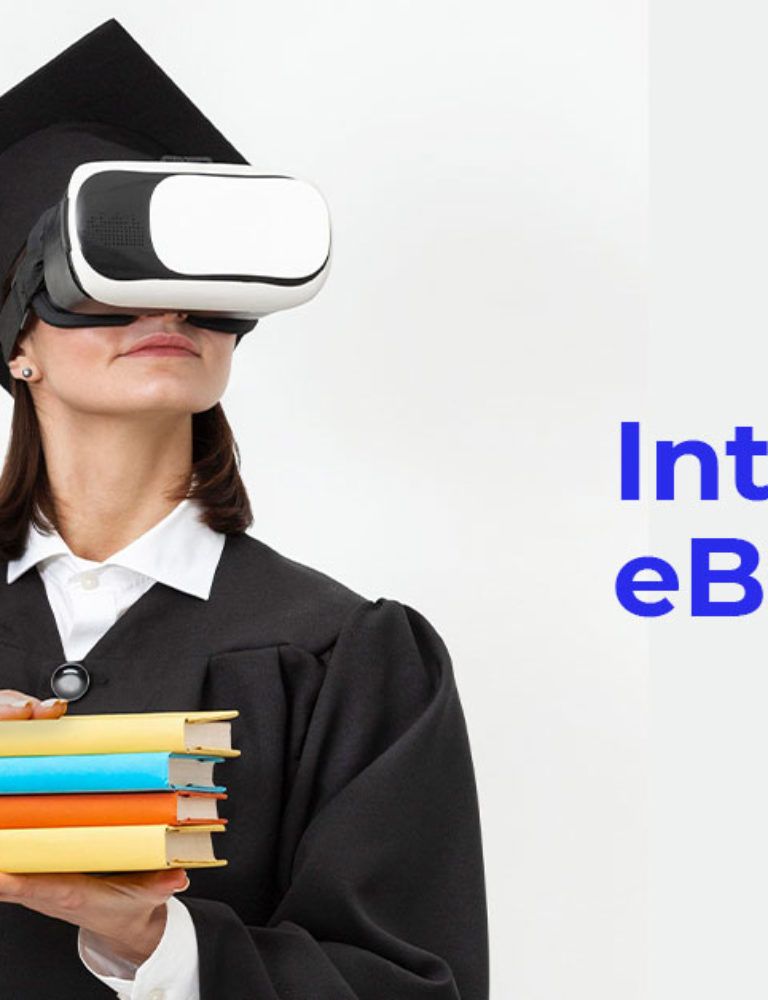Learning a new language is one of the most basic skills known to humankind. We start right from the cradle, emulating the sounds we hear around us. We then learn a native language through interactions with parents and family. In school, college, and university, we learn languages in a more structured way.
In an increasingly globalized world, the demand for learning languages has grown extensively. For instance, students learn the native language of the country they are moving to for higher studies. Similarly, professionals aiming to work abroad may also need to learn the local language to thrive and grow in their careers.
The growing scale of language learners has given rise to the launch of language learning tools, which make language learning accessible to millions. For instance, cloud-based publishing platforms, such as KITABOO, enable seamless creation and secure dissemination to enable efficient learning of a new language.
You would be surprised to know that the online language learning sector was valued at $7.4 billion in 2022. And that’s not all! The online language learning sector is expected to accelerate at a Compound Annual Growth Rate (CAGR) of 19.85% between 2023 and 2030 to reach a market value of $31.50 billion in 2023.
Let’s understand the value delivered by language learning apps and how they compare with traditional methods.
Table of Contents
I. What are Language Learning Tools?
II. Snapshot of Traditional Learning Methods
III. Language Learning Tools vs. Traditional Methods
- Access to Learning
- Accessibility of Learning Methods
- Learning Engagement
- Retention of Information
- Tracking Learning Effectiveness
IV. Gauging Learning Effectiveness
V. The Takeaway
I. What are Language Learning Tools?
Language learning tools are interactive tools that enable learners to become proficient in the four skills related to language learning. These include:
- Writing
- Reading
- Listening
- Speaking
Today, users can download a language-focused mobile app and instantly start learning without restrictions. A mobile-focused approach enables millions of users to learn simultaneously at any given time.
Another unique aspect of such a tool is that it may or may not have access to any engagement with a human teacher or facilitator. The tool empowers users to learn languages from scratch on their own. A user’s ability to hone all four skills effectively speaks to the efficacy of any language learning tool.
However, some tools focus on helping learners hone a specific skill rather than all four. Digital textbook platforms such as KITABOO enable tool publishers to customize content based on the needs of users.
II. Snapshot of Traditional Learning Methods
Teachers are at the forefront of the traditional language learning process. They follow a syllabus, which progresses chronologically, with all students learning at the same pace.
The teaching method involves lecture-style classes, where every lesson is introduced and navigated by teachers. Physical textbooks and notebooks are used for learning and practicing writing skills. Students are evaluated through exams administered at regular intervals.
Traditional teaching methods may be applied in the context of school and university language learning. These methods can also be applied in independent offline or online learning programs, with video conferencing as the main engagement interface.
III. Language Learning Tools vs. Traditional Methods
Take a look at the comparison of language learning tools with traditional learning methods across various parameters:
1. Access to Learning
Language learning, traditionally, has been highly dependent on the availability of teachers. It could not happen in the absence of an instructor in schools, colleges, or universities.
On the other hand, the use of language learning tools takes away the dependency on teachers. Students can access interactive modules presented in myriad formats. This approach offers them the autonomy to learn at any time.
The mobile-first approach of language learning tools also makes learning accessible. It removes geographical and other barriers.
2. Accessibility of Learning Methods
Classroom learning lacks accessibility frameworks for a large spectrum of learners. Individuals with disabilities, mobility challenges, language barriers, and learning challenges are excluded. The smart use of technology, however, is bridging the gaps, making language learning an equal opportunity.
For instance, traditional methods require that all students learn at the same pace. However, language learning tools gauge the language proficiency and skill level of students and adapt lessons accordingly.
The use of Artificial Intelligence (AI) and Machine Learning (ML) allows learners to proceed at a pace and with the learning method that best suits their needs.
The usage of digital publishing platforms like KITABOO allows publishers to build accessible language learning tools for a wide spectrum of learners.
3. Learning Engagement
The engagement level of traditional teaching methods is dependent upon the individual teaching style of the instructor. If the teacher’s approach is not engaging enough, students may lose interest in learning and drop out of the class.
However, language learning tools, by default, are designed to be engaging. Content present in multiple formats like videos, audio narrations, interactive models, interactive eBooks, and quizzes contribute to making lessons engaging.
The introduction of gamification further elevates the quality of engagement by bringing in storylines, characters, sound and colors, challenges, rewards, and leaderboards.
4. Retention of Information
Perfecting language skills requires a lot of daily practice. Merely learning grammar, pronunciation, and sentence construction will not suffice in building a skill. Hence, revision is an important aspect of the process.
Traditional learning has limitations with regard to revision. From a practical standpoint, not having other speakers of a language to interact with can be a serious limitation in one’s progress.
Language learning tools have solved this problem through the use of technology. Learners have access to large libraries of interactive resources that they can engage with on demand. Thus, learners can stay connected to the language every day.
5. Tracking Learning Effectiveness
Learning effectiveness in a traditional context is tracked through exams and tests hosted at various intervals. Platforms such as KITABOO ensure that language learning tools enable daily tracking of progress.
There is extensive data to paint a realistic picture of a learner’s progress in real time. Education providers can introduce coaching or other methods to help them improve based on performance.
IV. Gauging Learning Effectiveness
Traditional learning methods used for language learning have no doubt been effective in their own way. However, there are several limitations.
For instance, learners with challenges lose out due to an inaccessible environment. Revision of language skills is a challenge due to a lack of access to resources and language peers to engage with.
On the other hand, language learning tools open up opportunities to a wide spectrum of learners. They have access to a library of multimedia resources, which enable learning and revision. They can learn on demand and at their own pace.
The usage of technologies such as the Natural Learning Process (NLP) is also making it possible for learners to perfect speaking skills, the most challenging of all language skills.
While traditional learning methods can be effective for thousands of learners, language learning tools designed and delivered via platforms like KITABOO can be effective for millions of learners located across the globe. Hence, the scale of effectiveness is significantly different.
V. The Takeaway
As the demand for language learning continues to grow across the world, education providers will need to leverage language learning tools as they scale and aim to grow their audiences.
Language learning software creators will continue to innovate and empower learners to excel in all four language learning skills with equal proficiency. Technologies such as AI, ML, automation, NLP, and gamification will play a greater role in helping education providers scale up learning effectiveness.
Education providers and publishers can use cloud-based publishing platforms, such as KITABOO, to publish, market, distribute, and amplify their solutions to audiences worldwide.
Suggested Reads:
Discover How An Ebook Conversion, Publishing & Distribution Platform Can Help You
Kitaboo is a cloud-based content platform to create-publish & securely distribute interactive mobile-ready ebooks.
You May Also Like









